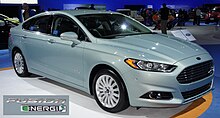
The Green Car of the Year is a Car of the Year award from the Green Car Journal . The winner is selected by an 11-member panel comprising automotive and environmental experts. Invited jurors have included Mario Andretti; Carroll Shelby, Jay Leno, Carl Pope (Sierra Club), Christopher Flavin (Worldwatch Institute), Jonathan Lash (World Resources Institute) and Jean-Michel Cousteau (Ocean Futures Society).
Contents
A separate Green Truck of the Year award was launched in 2015. [1]
In early October 2015, the 2009 and 2010 awards were rescinded as a result of the Volkswagen emissions scandal. [2]


